14 Shrubs With Leaves That Shift Color in Late Autumn
Gardens change quickly once the air cools, and some plants begin to shine in a whole new way. Many autumn favorites reach their most vibrant stage during this season, bringing steady color and texture to tired beds. These plants can refresh any outdoor space with very little effort. Take a moment to look closer at these standouts, and you might find new choices for your yard.
This post may contain affiliate links, which helps keep this content free. Please read our disclosure for more info.
Burning Bush (Euonymus alatus)
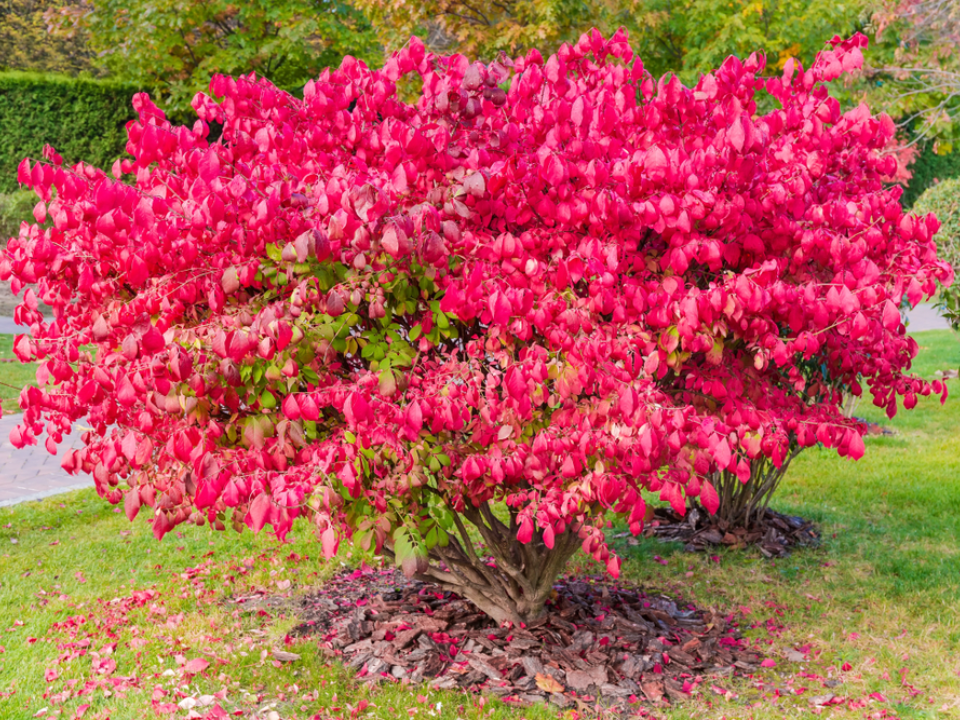
Burning Bush is known for its brilliant red foliage in late autumn, creating a striking contrast against the cooler landscape. Its leaves shift from green to fiery red as the season progresses, making it one of the most vibrant shrubs in fall. This shrub grows best in well-drained, fertile soil and prefers full sun to partial shade. Its colorful display is a result of the cooler temperatures and shorter days that trigger the color change in its leaves.
Not only is it admired for its red foliage, but the Burning Bush also has a dense, bushy growth habit that makes it a great choice for hedges or as a focal point in the garden. It can tolerate a wide range of soil types and is relatively low-maintenance, which adds to its popularity. However, it is important to trim it back in early spring to maintain its shape and size. When positioned correctly, this shrub can provide year-round interest with its dramatic color shift in the fall.
Japanese Maple (Acer palmatum)

The Japanese Maple is a beautiful shrub known for its stunning foliage that changes from green to a mixture of vibrant reds, oranges, and purples in autumn. Its delicate, lacy leaves provide a refined elegance, especially when they transition to brilliant hues in late fall. Japanese Maples prefer partial shade and well-drained, acidic soil, thriving in cooler climates. Their leaves are known to hold color for an extended period, making them a long-lasting feature in autumn gardens.
This shrub works well in small gardens due to its compact size and striking appearance. The rich autumn colors make it an excellent choice for adding visual interest to shaded corners or along walkways. Japanese Maples can be slow-growing, but their colorful transformation in the fall makes the wait worthwhile. Proper pruning is essential to maintain its shape and health, especially after the leaves have fallen.
Sweetspire (Itea virginica)
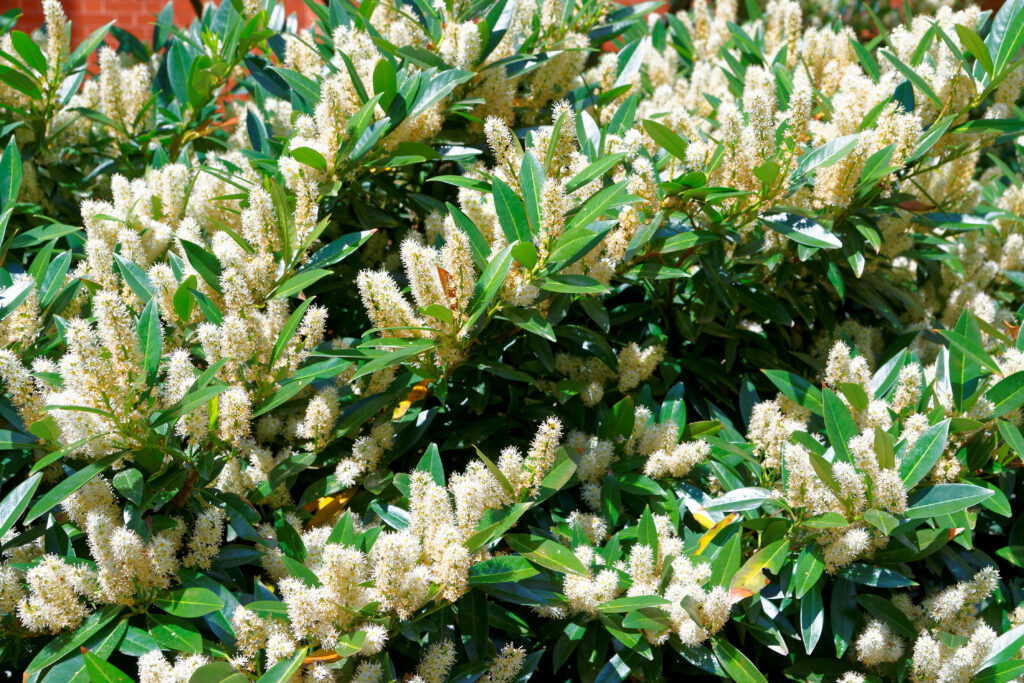
Sweetspire is a native shrub that provides exceptional color in the fall, with its leaves turning deep red, burgundy, and orange hues. Its compact size and dense, arching growth habit make it an ideal choice for borders or foundation plantings. Sweetspire thrives in moist, well-drained soil and performs best in partial to full sun. Its leaves are complemented by fragrant white flowers that appear in late spring to early summer.
The striking autumn color is what truly sets Sweetspire apart, making it a favorite for late-season interest in the garden. It is easy to care for and relatively pest-resistant, which adds to its appeal. As the temperatures drop, its vibrant foliage catches the eye and stands out against the cooler surroundings. Sweetspire also has the added benefit of attracting pollinators, such as bees and butterflies, throughout the growing season.
Ninebark (Physocarpus opulifolius)
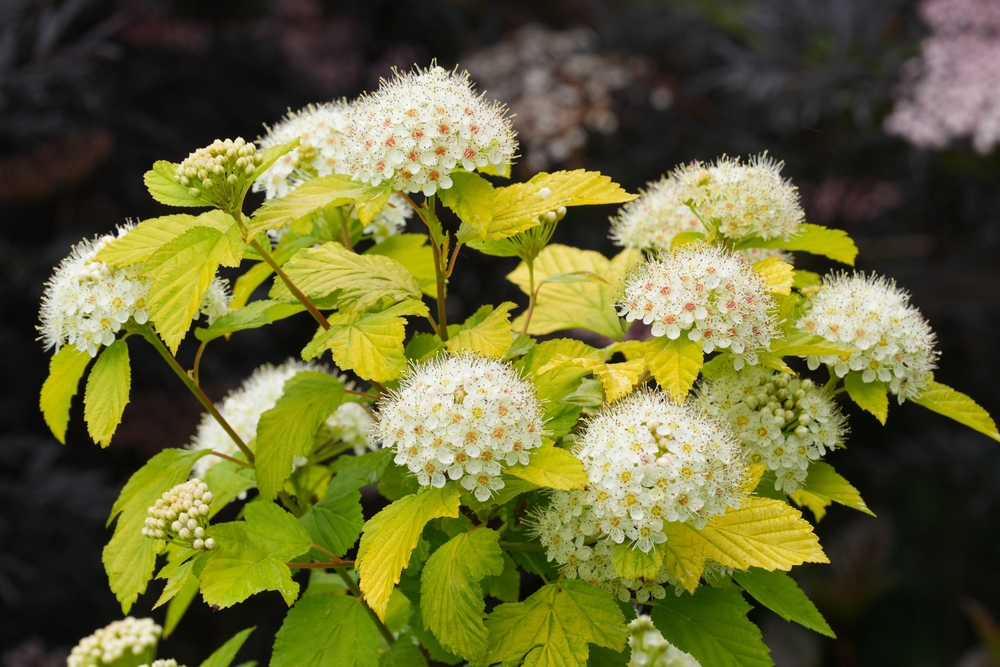
Ninebark is a versatile shrub that provides rich autumn color, with leaves turning shades of yellow, orange, and red. Its distinctive, peeling bark adds texture and interest year-round, but it is the fall foliage that steals the show. Ninebark grows well in full sun and prefers well-drained, moderately fertile soil. It is hardy and drought-tolerant once established, making it an excellent choice for low-maintenance gardens.
In addition to its fall color, Ninebark produces small white or pink flowers in late spring, which attract pollinators. It has a bushy growth habit, which works well as a hedge or background plant. Ninebark’s ability to adapt to various soil types and environmental conditions makes it a resilient and reliable shrub. Pruning it after flowering can help maintain its shape and encourage fresh growth.
Mapleleaf Viburnum (Viburnum acerifolium)
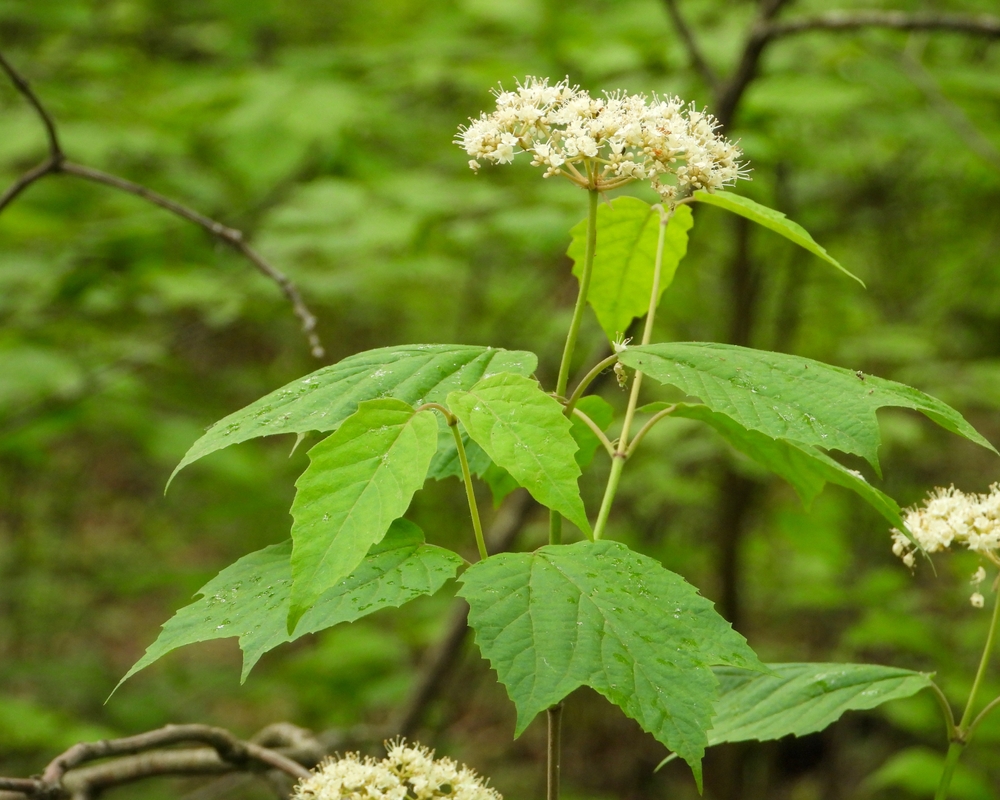
Mapleleaf Viburnum is a deciduous shrub that offers stunning fall color, with its leaves turning a rich array of red, purple, and orange tones. It is a low-growing shrub that thrives in shaded or partially shaded locations, making it ideal for woodland gardens. The plant prefers well-drained, acidic soil and is relatively tolerant of different moisture levels. Its small white flowers in spring provide early-season interest before the colorful fall foliage takes over.
This viburnum species is prized for its multi-season appeal, offering flowers in the spring, foliage in the fall, and attractive red berries in the winter. It grows slowly and can be used as a groundcover or in mass plantings. The contrast between the deep green summer leaves and the rich autumn colors provides a dynamic change throughout the year. Mapleleaf Viburnum is a great choice for gardeners seeking a shrub with beautiful fall foliage that fits well in woodland or shaded gardens.
Fothergilla (Fothergilla major)

Fothergilla is a deciduous shrub that offers exceptional autumn colors, with its leaves turning bright yellow, orange, and red. This shrub is known for its fragrant white flowers in spring, which precede the beautiful foliage. Fothergilla thrives in moist, well-drained, acidic soils and does best in full sun to partial shade. It is relatively easy to care for, requiring little maintenance once established.
The shrub’s compact size and striking fall colors make it an excellent choice for smaller gardens or as part of a mixed border. It also provides winter interest, as its woody stems and bark add texture to the landscape. Fothergilla’s fall color shift is gradual and can last for several weeks, making it a long-lasting feature in the garden. Proper pruning should be done after flowering to maintain its shape and promote new growth.
Euonymus (Euonymus fortunei)
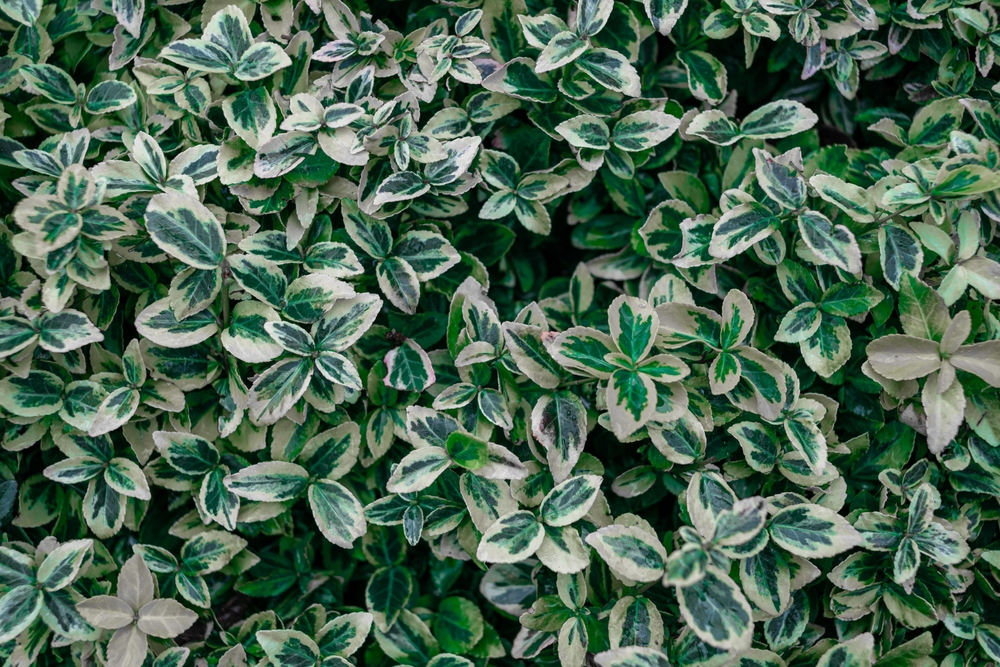
Euonymus, often called the Wintercreeper, is a versatile shrub that provides stunning color in late autumn, with its leaves turning red, purple, and yellow. It is a fast-growing shrub that can be grown as a groundcover, shrub, or even as a climbing vine. Euonymus grows best in well-drained soil and prefers partial to full sun. Its vibrant fall color makes it a standout in the garden, especially when it contrasts with evergreen plants.
In addition to its colorful foliage, Euonymus also features small, inconspicuous flowers in the spring. It is known for its ability to thrive in a wide range of growing conditions, including urban settings. Euonymus can be a great choice for filling in areas where other plants might struggle. Regular pruning can help keep it in shape and prevent it from becoming invasive, especially in warmer climates.
Autumn Blaze Maple (Acer × freemanii)

Autumn Blaze Maple is a hybrid tree known for its stunning fall foliage, but it also serves as a shrub in smaller forms. Its leaves turn a vibrant red-orange color, offering a fiery display in the autumn garden. This tree-shrub hybrid thrives in full sun and prefers well-drained, fertile soil. It grows quickly, providing shade during the summer and striking color in the fall.
While the Autumn Blaze Maple is most commonly grown as a tree, its shrub form is perfect for those with smaller gardens. It offers a great way to introduce a splash of autumn color to any landscape. The tree’s rapid growth allows it to reach maturity quickly, making it a popular choice for instant impact. Autumn Blaze Maple is a low-maintenance shrub that can tolerate drought and various soil types, making it a versatile choice.
Witch Hazel (Hamamelis virginiana)
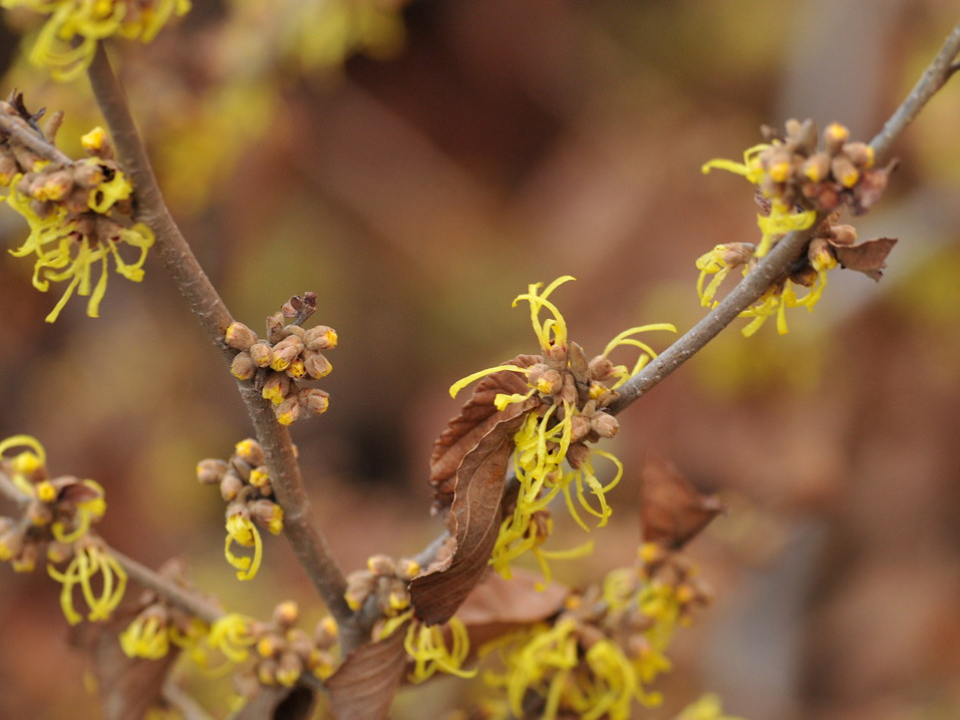
Witch Hazel is well known for its unique, late-season yellow flowers that appear in the winter, but its leaves also offer stunning color in the fall. The foliage turns bright yellow to golden hues before it falls. Witch Hazel thrives in well-drained, acidic soil and does best in partial to full sun. Its striking appearance in late autumn is enhanced by the transition of its leaves into these warm colors.
This shrub is a favorite for gardeners who want year-round interest. The autumn foliage contrasts beautifully with its winter flowers, which bloom during the coldest months. Witch Hazel’s fragrance adds to its appeal, as it is known for its aromatic flowers. It is a relatively low-maintenance shrub, making it a great choice for gardeners looking for beauty with little upkeep.
Spirea (Spiraea japonica)

Spirea is a popular shrub that offers a colorful display in late autumn, with its leaves changing to rich red and orange tones. It is known for its graceful arching branches and clusters of tiny flowers in the summer. Spirea grows best in full sun and well-drained soil, thriving in both dry and moist conditions. It is easy to care for, requiring minimal maintenance and pruning to maintain its shape.
In addition to its fall color, Spirea also provides interest in the spring and summer with its abundant blooms. The vibrant colors of its leaves make it a great choice for mixed borders or as a low hedge. Spirea can tolerate a variety of growing conditions, making it a versatile addition to any garden. It is especially effective when used in groups to create a striking autumn display.
Oakleaf Hydrangea (Hydrangea quercifolia)
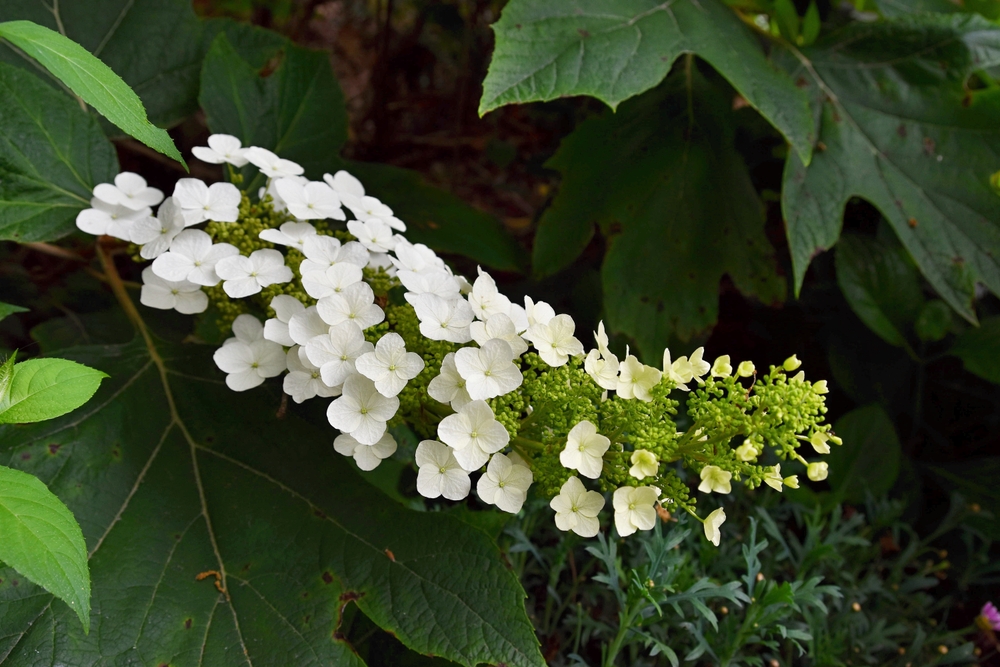
Oakleaf Hydrangea is known for its large, oak-shaped leaves that transition to brilliant shades of red, purple, and orange in the fall. This shrub thrives in partial to full sun and prefers moist, well-drained soil. Its foliage offers a dramatic color shift in late autumn, making it a standout in the garden. In addition to its fall color, Oakleaf Hydrangea produces creamy white flowers in early summer, which later turn to dried, ornamental clusters in the fall.
This shrub is perfect for gardeners looking to add texture and color to shaded or woodland areas. Its wide, lobed leaves resemble those of an oak tree, adding a unique element to the landscape. Oakleaf Hydrangea is also prized for its ability to withstand drought and heat once established. It provides year-round interest with its foliage, flowers, and bark.
Red-twig Dogwood (Cornus sericea)

Red-twig Dogwood is a standout shrub known for its striking red stems, but its leaves also provide an excellent autumn display. The leaves turn vibrant shades of yellow, red, and purple before falling. This shrub thrives in wet soil and can tolerate full sun or partial shade. Its colorful leaves are complemented by the rich red twigs that remain throughout the winter, making it a year-round feature.
Red-twig Dogwood is ideal for creating color contrasts in your garden, especially during the fall and winter months. It is a fast-growing shrub that can be used as a border or a backdrop for other plants. This shrub benefits from occasional pruning to remove older stems, which helps maintain its vibrant color. Red-twig Dogwood thrives in moist areas and adds a pop of color to any landscape.
Chokeberry (Aronia melanocarpa)
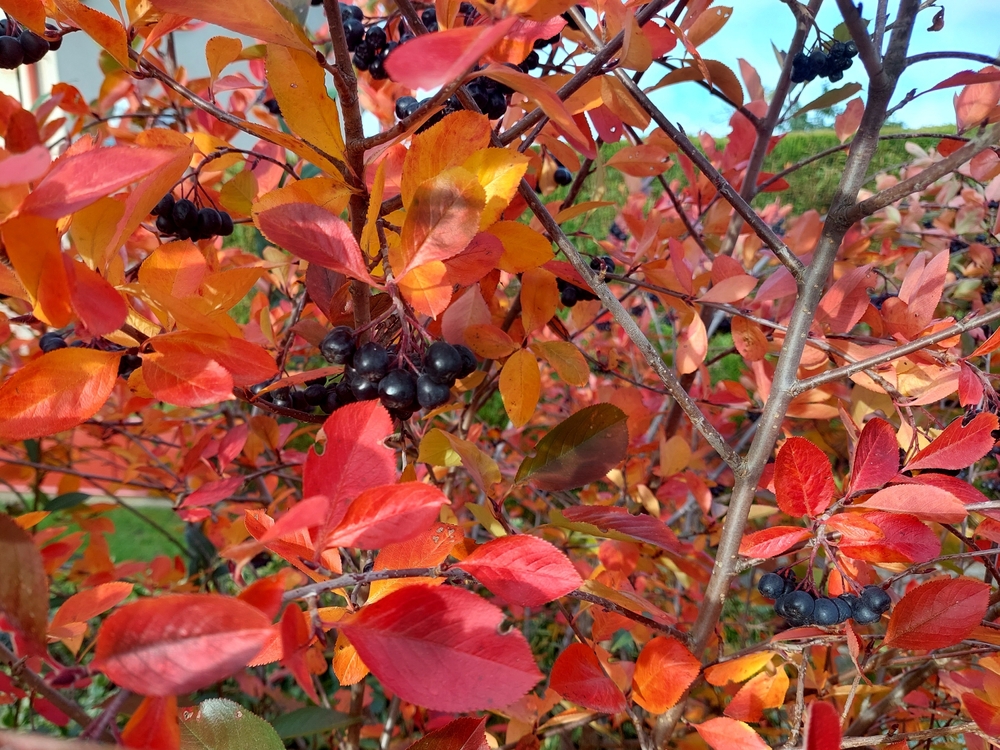
Chokeberry is a hardy shrub that offers brilliant fall colors, with its leaves turning red and purple before dropping. It grows well in full sun to partial shade and prefers well-drained, moist soil. Chokeberry produces white flowers in the spring, followed by black or red berries that persist into the fall. These berries are often left on the shrub through winter, adding visual interest to the garden.
In addition to its colorful fall foliage, Chokeberry is known for its resilience and ability to tolerate a variety of growing conditions. It is a great choice for naturalizing or filling in larger garden areas. The berries are edible but have a tart taste, making them popular for jams and jellies. Chokeberry is a low-maintenance shrub that adds both color and function to the garden.
Creeping Jenny (Lysimachia nummularia)
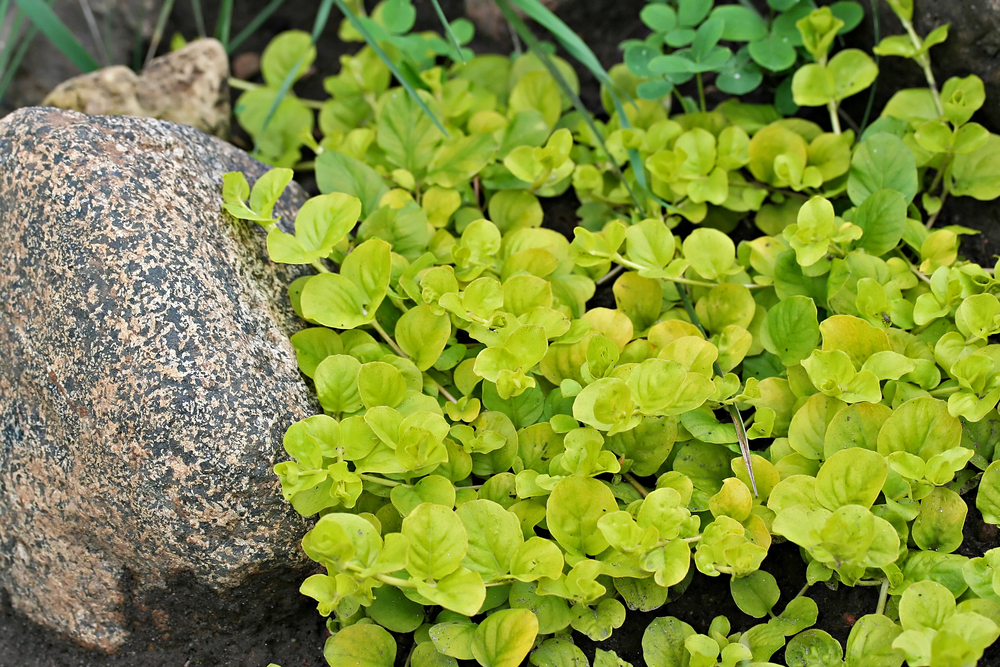
Creeping Jenny is a low-growing, ground-covering shrub that offers a range of yellow and golden hues in the fall. It grows well in moist, well-drained soil and prefers partial to full sun. While it is often used as a groundcover or in hanging baskets, its colorful fall foliage adds charm to any garden. The leaves turn yellow before eventually fading to a golden-brown color in late autumn.
This plant is known for its ability to spread quickly, making it a great choice for filling in empty spaces or for erosion control. Creeping Jenny is easy to grow and requires minimal care, making it perfect for gardeners with busy schedules. It is also a great companion plant, often used to complement other perennials. The plant’s vibrant autumn color makes it a pleasant surprise in the cooler months.
This article originally appeared on Avocadu.
